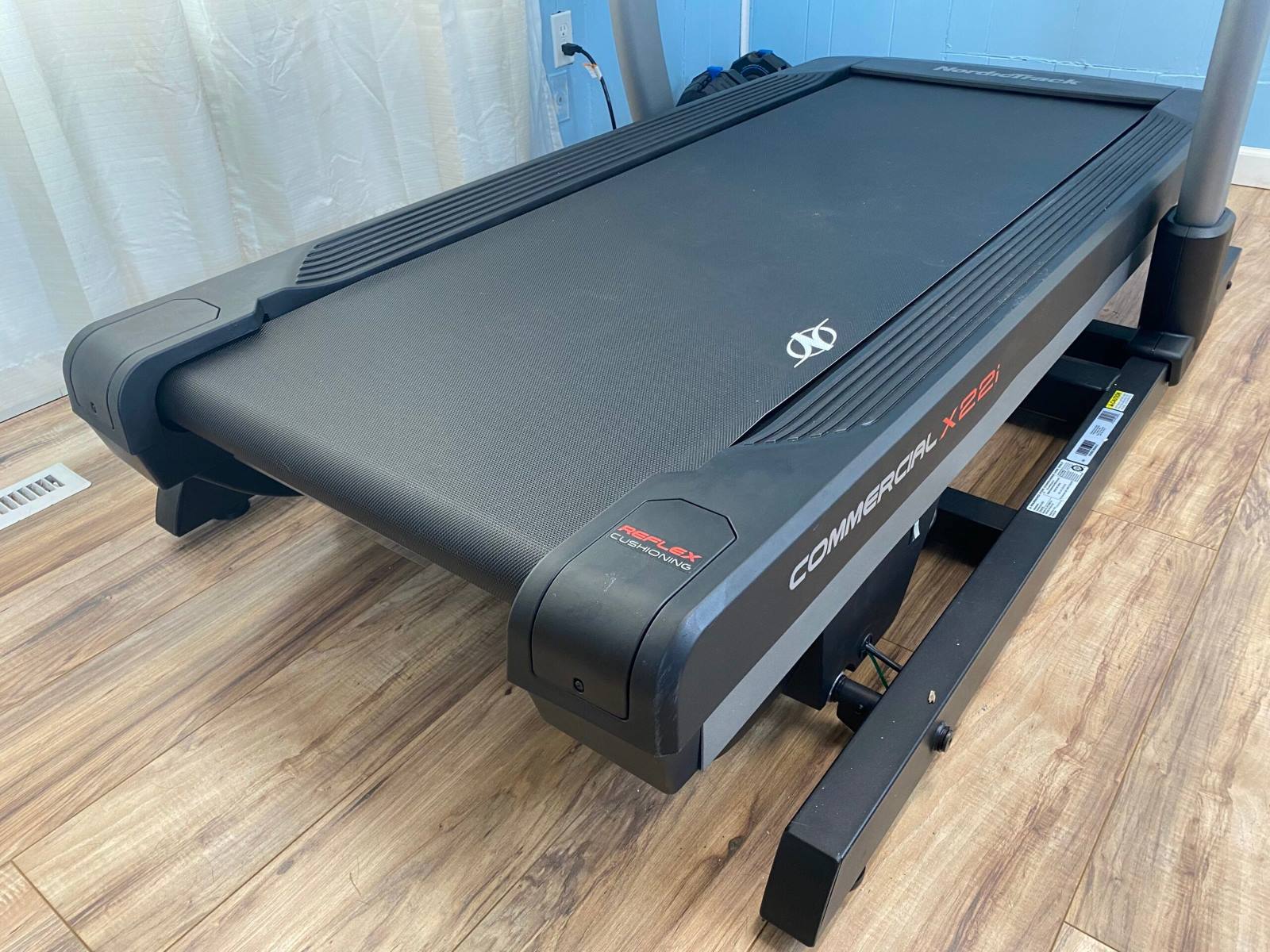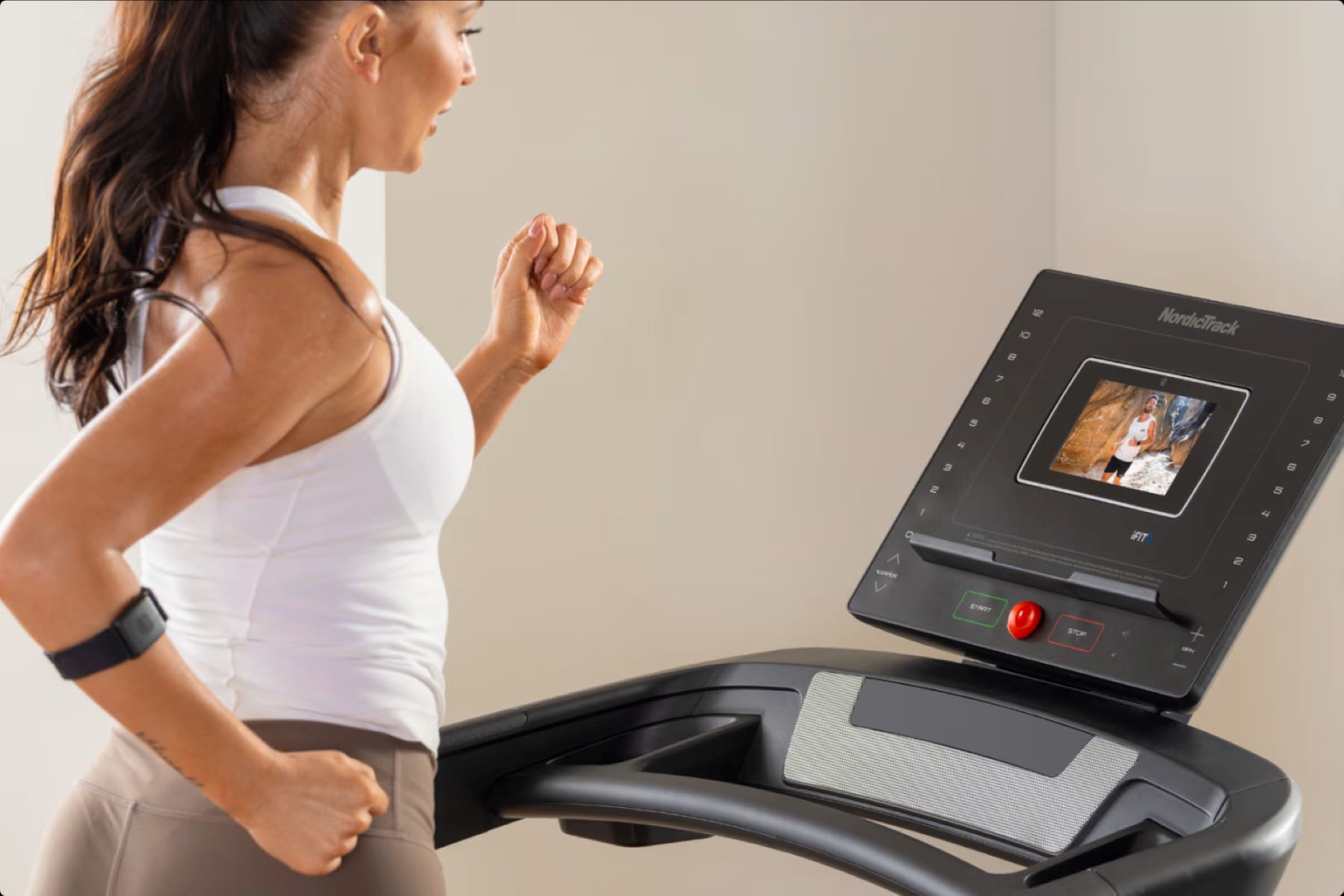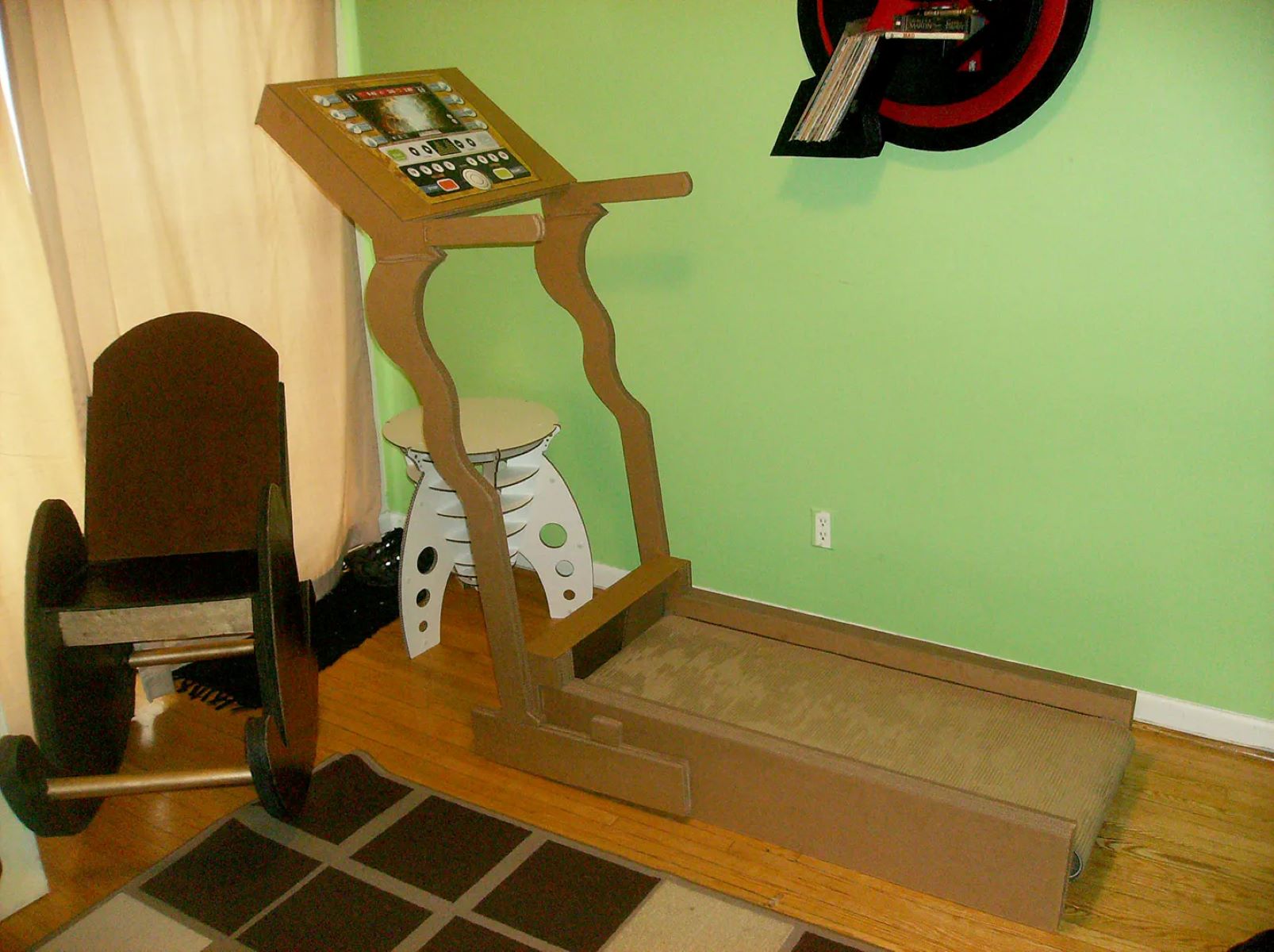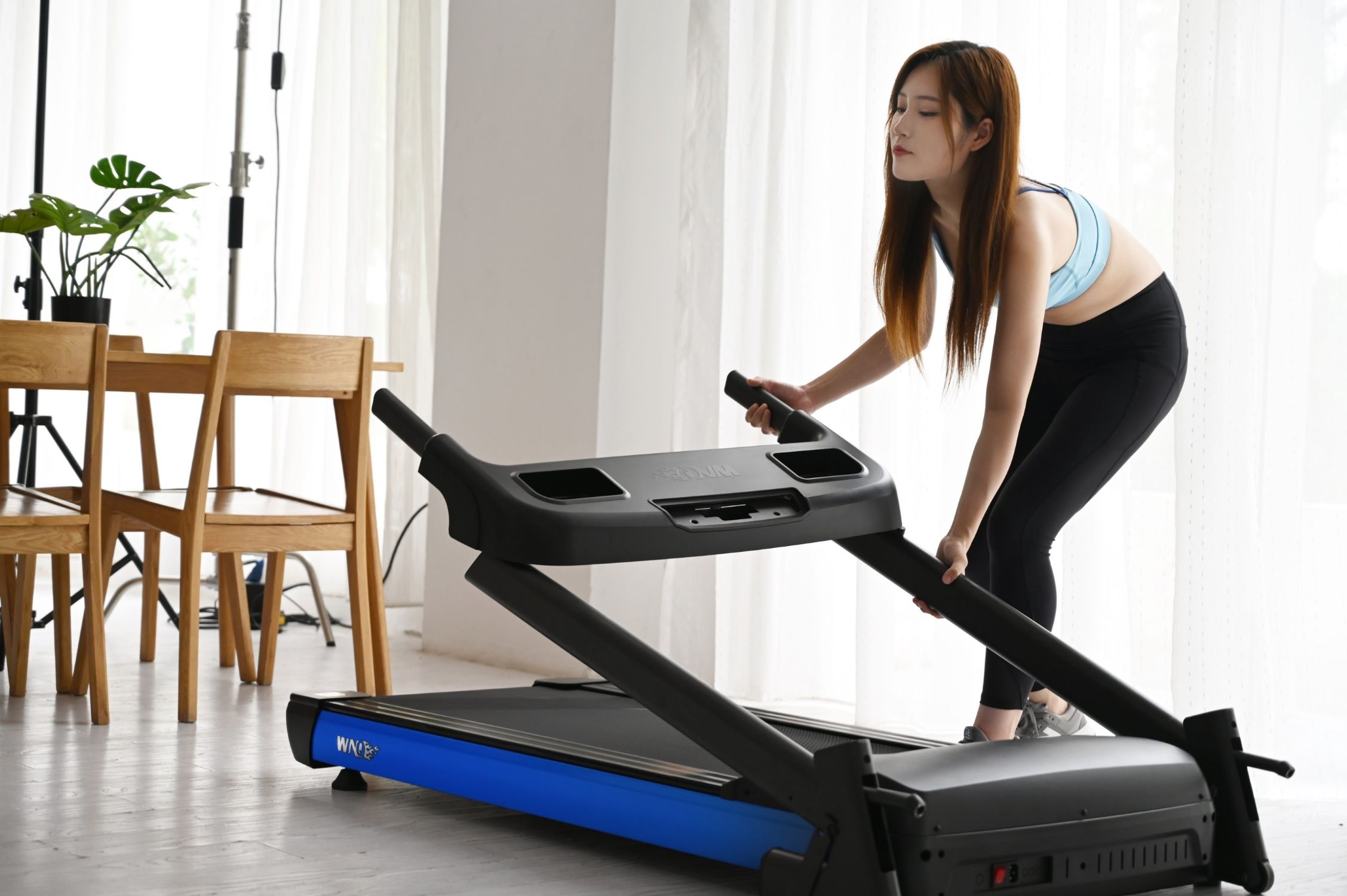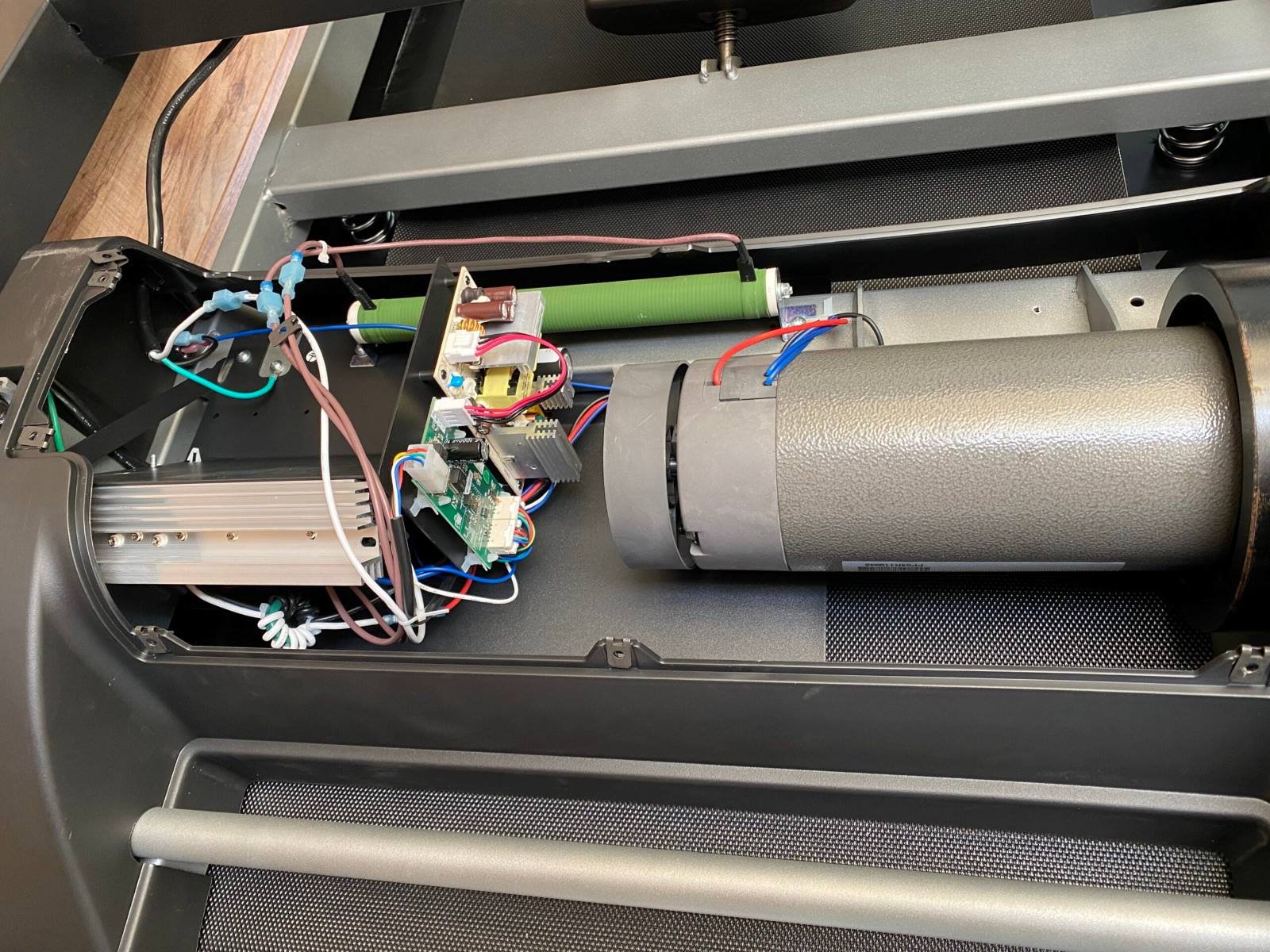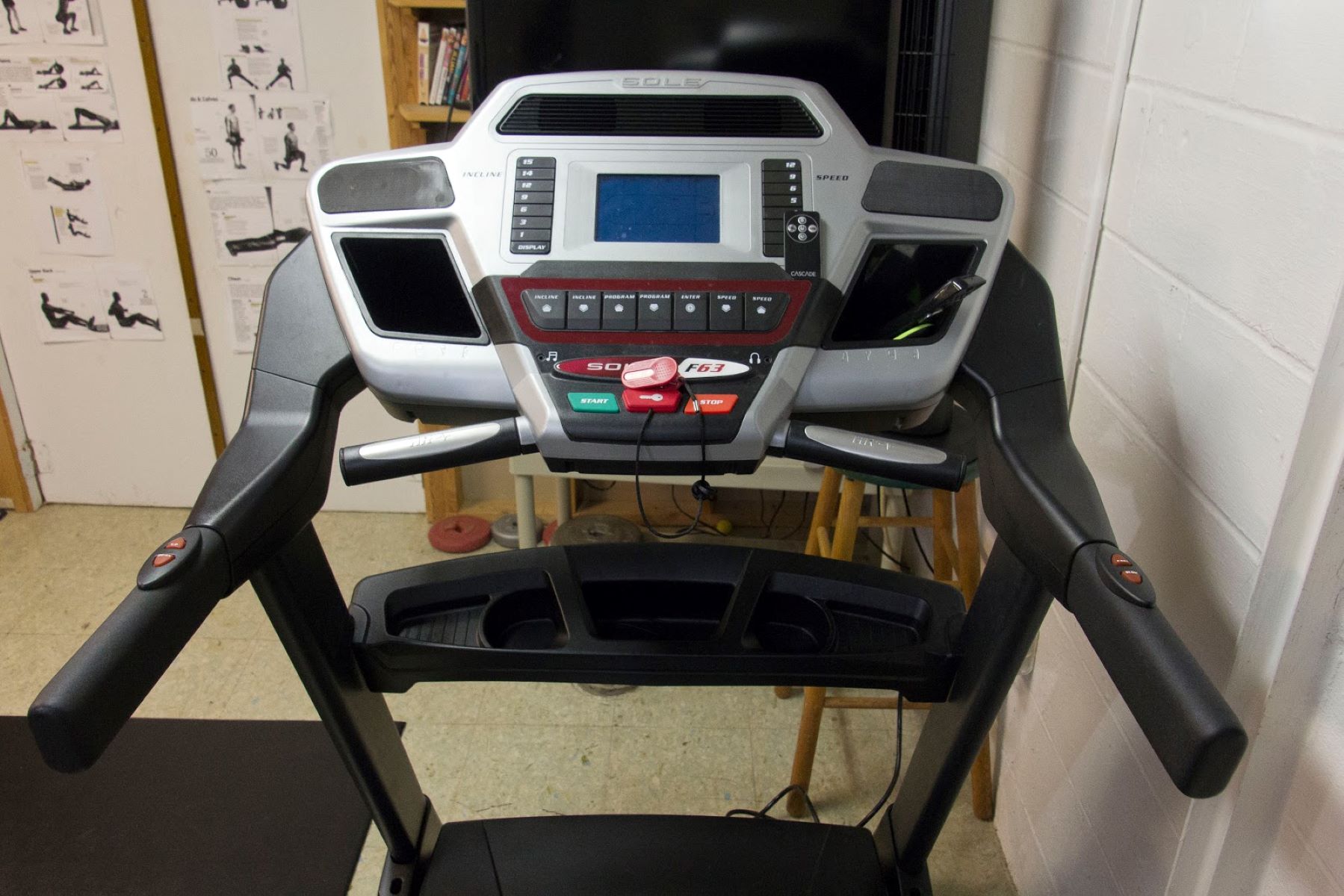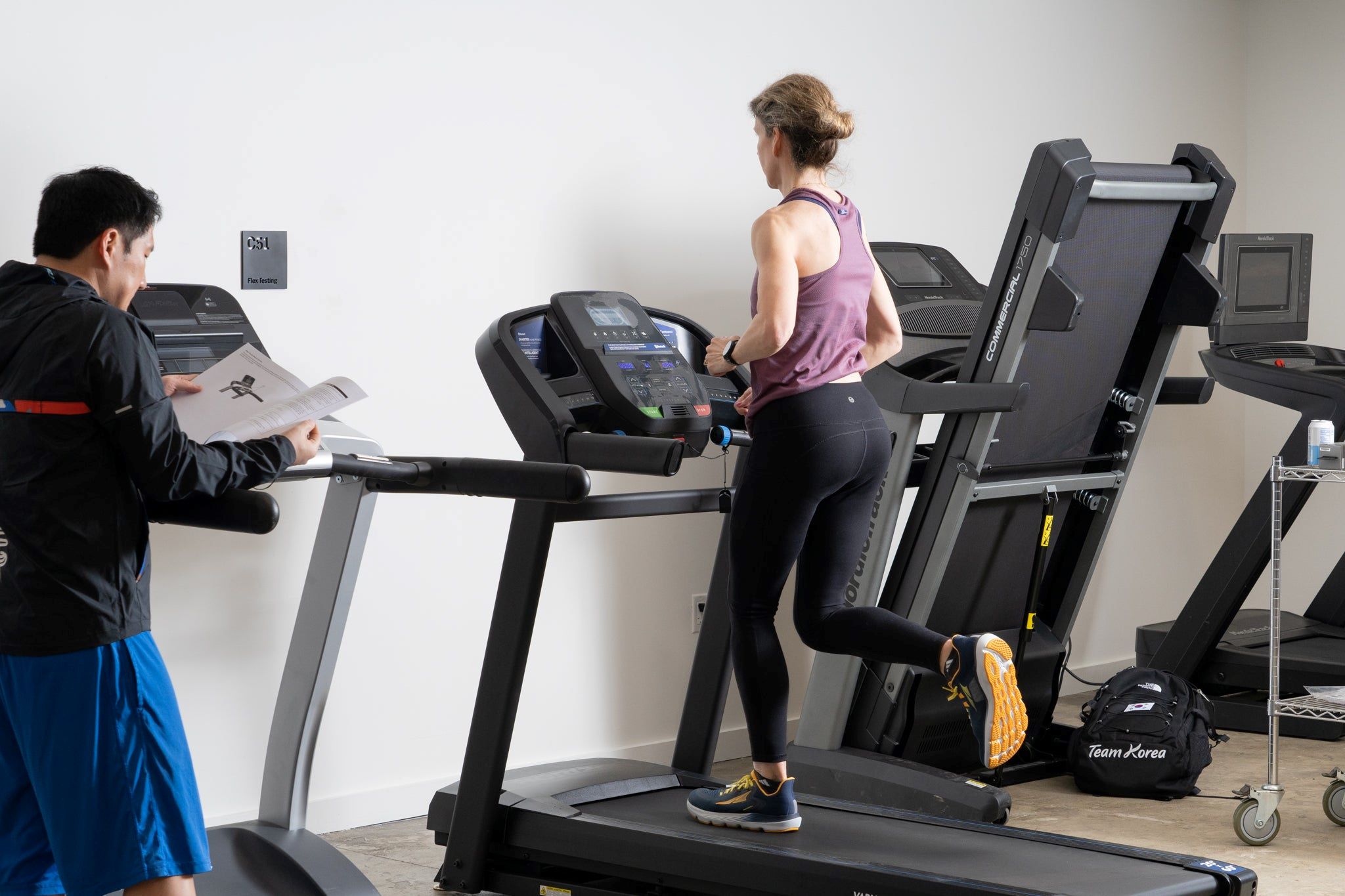

Featured
How Long Is 10,000 Steps On Treadmill
Modified: January 2, 2024
Discover the perfect treadmill workout with our featured article on how long 10,000 steps actually are! Start achieving your fitness goals today.
Introduction
Welcome to the world of fitness and wellness! If you’re on a journey to improve your health and increase your physical activity, you’ve probably come across the widely recommended goal of taking 10,000 steps per day. Walking is a simple and effective form of exercise that can be easily incorporated into your daily routine, and using a treadmill is a popular choice for indoor walking.
But have you ever wondered how long it takes to complete 10,000 steps on a treadmill? Whether you’re an avid treadmill user or just starting out, understanding the time and effort required to reach this milestone can help you set realistic goals and gauge your progress. In this article, we will explore the concept of 10,000 steps, the benefits of walking on a treadmill, factors that affect the step count, and how to calculate the approximate length of 10,000 steps on a treadmill.
Walking is a low-impact aerobic exercise that offers numerous health benefits. It can help improve cardiovascular health, reduce the risk of chronic diseases, enhance mental well-being, and aid in weight management. Taking 10,000 steps a day is often recommended because it aligns with the physical activity guidelines set by health organizations.
Using a treadmill for walking provides several advantages. It allows you to exercise regardless of the weather conditions, provides a controlled and adjustable surface to walk on, and offers various features to track your progress. Treadmills also allow you to set specific targets, such as time, distance, or calorie burn, making it easier to measure your achievements and stay motivated.
The duration of reaching 10,000 steps on a treadmill can vary depending on several factors, including your walking speed, duration of your workout, and the incline level of the treadmill. This means that the time required to complete 10,000 steps can differ from person to person.
Calculating the approximate length of 10,000 steps on a treadmill can help you estimate the time commitment required to achieve this goal. Maintaining a consistent walking pace is important for accuracy, but keep in mind that the length of a step can vary between individuals. We’ll delve deeper into the calculations later in this article.
To help you make the most of your treadmill workouts and achieve your 10,000-step goal, we’ll also provide some tips and strategies that you can implement. So, if you’re ready to put on your walking shoes and hop on the treadmill, let’s dive into the details and discover how you can achieve 10,000 steps on a treadmill!
Understanding 10,000 Steps
Before we dive into the specifics of completing 10,000 steps on a treadmill, let’s take a closer look at what this number actually represents. The concept of taking 10,000 steps per day originated in Japan in the 1960s and has since gained popularity worldwide as a general guideline for daily physical activity.
The number itself may seem daunting, but it’s important to remember that it’s an achievable goal that can help improve your overall health and fitness. Walking 10,000 steps is roughly equivalent to covering 5 miles (or 8 kilometers) in distance, depending on your stride length.
While 10,000 steps is often touted as a benchmark for maintaining good health, it’s important to note that the actual number of steps needed may vary depending on factors such as age, fitness level, and specific health goals. Some individuals may require more steps to meet their fitness objectives, while others may find that fewer steps are sufficient for their needs.
Nonetheless, aiming for 10,000 steps provides a tangible target that can serve as a baseline for most individuals looking to incorporate more physical activity into their daily lives.
Monitoring your step count can be done through various tracking devices, such as pedometers, fitness trackers, or smartphone apps. These tools provide real-time feedback on your step count, distance traveled, and even calorie expenditure, making it easier to keep track of your progress and stay motivated.
Beyond improving your physical health, reaching 10,000 steps per day has additional benefits. It encourages an active lifestyle, helps manage weight, boosts energy levels, improves mood, and reduces the risk of chronic conditions such as heart disease, diabetes, and certain types of cancer.
Moreover, incorporating walking into your daily routine is a convenient way to get active without the need for expensive equipment or specialized training. You can easily integrate walking into your day by taking the stairs instead of the elevator, parking farther away from your destination, or going for a stroll during your lunch break.
Now that we have a better understanding of what 10,000 steps represents and the benefits associated with reaching this goal, let’s explore how walking on a treadmill can help you achieve your daily step count and improve your overall fitness.
Benefits of Walking on a Treadmill
Walking on a treadmill offers numerous benefits for your physical and mental well-being. Whether you’re a beginner or a seasoned fitness enthusiast, here are some of the advantages of incorporating treadmill walking into your exercise routine:
1. Convenience: One of the major advantages of using a treadmill is the convenience it offers. You can walk indoors at any time, regardless of the weather conditions. This eliminates obstacles like rain, snow, extreme heat or cold, making it easier to stick to your exercise routine and achieve your daily step count.
2. Controlled Environment: Treadmills provide a controlled and predictable walking surface. The cushioned belt of a treadmill reduces the impact on your joints, making it a low-impact exercise option. This is especially beneficial for individuals with joint problems or those recovering from injuries.
3. Customizable Settings: Treadmills offer various customizable settings to enhance your walking experience. You can adjust the speed, incline, and even simulate different terrain to add variety and challenge to your workouts. This allows you to gradually increase the intensity of your walks and continue to challenge your fitness level.
4. Tracking Features: Most modern treadmills come equipped with tracking features that allow you to monitor your progress. You can easily track your step count, distance traveled, calories burned, and even heart rate during your treadmill walks. This feedback not only helps you stay motivated but also provides valuable data to track your fitness goals and make adjustments as necessary.
5. Multitasking Opportunities: Walking on a treadmill offers the convenience of multitasking. You can catch up on your favorite TV shows, listen to podcasts, read books, or even work on your laptop while walking. This time-efficient approach allows you to accomplish multiple tasks while getting your steps in.
6. Mental Health Benefits: Walking on a treadmill has positive effects on your mental well-being as well. It helps reduce stress, anxiety, and depression by releasing feel-good hormones called endorphins. The rhythmic movement and the opportunity to engage in other activities while walking can also help clear your mind and boost creativity.
7. Safety: Treadmills provide a safe and controlled environment for walking, especially when compared to outdoor walking where hazards such as uneven surfaces, traffic, or unpredictable weather conditions may be present. This makes it a suitable option for individuals who prefer a secure and controlled exercise environment.
Now that we’ve explored the benefits of walking on a treadmill, let’s look at the factors that can affect the step count on a treadmill and how to calculate the approximate length of 10,000 steps on this popular exercise equipment.
Factors Affecting Treadmill Step Count
The number of steps you take on a treadmill can vary based on several factors. Understanding these factors can help you get a more accurate estimation of your step count and better track your progress toward reaching 10,000 steps. Here are some key factors that can affect treadmill step count:
1. Walking Speed: The speed at which you walk on a treadmill directly impacts your step count. Generally, the faster you walk, the more steps you’ll take in a given time period. However, it’s important to find a pace that is comfortable for you and aligns with your fitness level.
2. Stride Length: Your stride length, which refers to the distance covered with each step, plays a significant role in determining the number of steps you take on a treadmill. Individuals with longer legs usually have a larger stride length and thus take fewer steps to cover the same distance compared to those with shorter legs.
3. Incline Level: Adjusting the incline level on a treadmill can significantly impact your step count. Walking uphill or at an incline requires more effort and thus increases the number of steps taken to cover the distance. Similarly, walking on a decline can reduce the step count since you cover more ground with each step.
4. Hand Support: Some individuals may choose to hold onto the handrails or console while walking on a treadmill for stability or balance. However, relying heavily on hand support can diminish the natural arm swing motion, which may result in fewer steps being counted. It’s best to maintain a natural walking posture with arms swinging freely to ensure an accurate step count.
5. Treadmill Accuracy: The accuracy of the treadmill’s step counting feature can vary depending on the quality and calibration of the machine. While most modern treadmills provide fairly accurate step count readings, keep in mind that there may be slight variations between different models and brands.
6. Body Weight: Your body weight can affect the number of steps registered on a treadmill. Heavier individuals may exert more pressure on the treadmill belt, resulting in a higher step count compared to someone with a lower body weight.
7. Technique and Efficiency: Lastly, your walking technique and efficiency can impact the step count. Walking with a smooth and efficient gait, maintaining an upright posture, and taking full steps can help optimize your step count and ensure that each step is properly registered by the treadmill.
Keep in mind that while these factors can impact your step count, they may not be the sole determinants of your overall fitness or the benefits you derive from walking on a treadmill. Focus on consistently engaging in physical activity, gradually increasing your intensity, and listening to your body to achieve your health and fitness goals.
Now that we have a better understanding of the factors that can affect treadmill step count, let’s move on to calculating the approximate length of 10,000 steps on a treadmill.
Calculating the Length of 10,000 Steps on a Treadmill
Estimating the length of 10,000 steps on a treadmill requires taking into account a few key factors. While it’s not an exact science, you can use certain calculations to get a rough idea of the distance covered. Here’s how you can calculate the approximate length of 10,000 steps on a treadmill:
1. Measure Your Stride Length: Start by measuring your stride length, which is the distance covered with each step. You can do this by walking a known distance, such as 20 or 30 feet, and counting the number of steps it takes you to cover that distance. Divide the total distance walked by the number of steps to find your average stride length in feet.
2. Convert Stride Length to Feet per Step: Since 10,000 steps is our target, multiply your average stride length (in feet) by 10,000 to get the total distance in feet. This will give you an estimate of how many feet you need to cover on the treadmill to complete the 10,000 steps.
3. Convert Feet to Miles: Convert the estimated distance in feet to miles by dividing it by 5,280 (since there are 5,280 feet in a mile). This will give you an approximate distance in miles that you would need to walk on the treadmill to reach 10,000 steps.
Keep in mind that these calculations provide an estimate, and the actual distance covered may vary based on other factors such as walking speed, incline level, and individual variations in stride length.
For example, let’s say your average stride length is determined to be 2.5 feet per step. Multiplying this by 10,000 gives you a total distance of 25,000 feet. Dividing this by 5,280 (feet per mile) gives you an approximate distance of 4.73 miles to complete 10,000 steps on the treadmill.
Remember that tracking devices, such as pedometers or fitness trackers, can provide more accurate measurements of your step count and distance covered. These devices use advanced algorithms and motion sensors to calculate your steps and distance, taking into account factors like stride length and walking patterns.
Now that you have a rough idea of the distance needed to achieve 10,000 steps on a treadmill, let’s explore some tips and strategies to help you reach your goal and make the most of your treadmill workouts.
Tips for Achieving 10,000 Steps on a Treadmill
Reaching 10,000 steps on a treadmill may seem challenging, especially if you’re new to walking or have a busy schedule. However, with the right strategies and mindset, you can easily incorporate more steps into your daily routine. Here are some tips to help you achieve 10,000 steps on a treadmill:
1. Start Gradually: If you’re not accustomed to walking long distances, start by setting smaller goals and gradually increase your step count each day. Begin with a comfortable number of steps, such as 5,000 or 7,500, and work your way up to 10,000 over time.
2. Break It Up: Instead of trying to achieve 10,000 steps in a single session, consider breaking it up into smaller sessions throughout the day. Take short walks in the morning, during lunch breaks, and in the evening to accumulate your step count gradually.
3. Make Walking a Routine: Incorporate walking into your daily routine by scheduling dedicated time for treadmill sessions. Treat it as a non-negotiable appointment with yourself, just like any other important commitment on your agenda.
4. Increase Walking Intensity: To achieve 10,000 steps within a shorter time frame, focus on increasing the intensity of your walks. Increase the speed or incline gradually to challenge yourself and burn more calories.
5. Use Interval Training: Incorporate interval training into your workout routine by alternating between periods of brisk walking and slower recovery walks. This will not only boost your step count but also provide cardiovascular benefits.
6. Kill Two Birds with One Stone: Use your treadmill time to catch up on your favorite TV shows, listen to audiobooks or podcasts, or even answer emails. Mixing entertainment or productivity with walking can make the time pass quickly and keep you motivated.
7. Set Mini Goals: Break down your 10,000-step goal into mini milestones. For example, aim to reach 2,500 steps every 30 minutes or achieve 5,000 steps before lunchtime. Celebrating these smaller victories can help you stay motivated and make the overall goal seem more manageable.
8. Involve Friends or Family: Make walking on a treadmill a social activity by inviting friends or family members to join you. Set up challenges or friendly competitions to keep everyone motivated and accountable.
9. Mix Up Your Workouts: Incorporate variety into your treadmill workouts to keep them engaging and prevent boredom. Try different walking programs, experiment with different incline levels, or even incorporate short bursts of jogging or running if it aligns with your fitness level.
10. Track Your Progress: Keep track of your daily step count and aim for consistent progress. Use a pedometer, fitness tracker, or smartphone app to monitor your steps, distance, and calorie burn. Seeing your progress in real-time can be motivating and inspire you to keep going.
Remember, achieving 10,000 steps on a treadmill is just one part of leading a healthy and active lifestyle. It’s important to listen to your body, prioritize rest and recovery, and combine walking with other forms of exercise for a well-rounded fitness routine.
Now that you’re armed with these tips, it’s time to lace up your shoes, hop on the treadmill, and start taking those steps toward a healthier you!
Conclusion
Completing 10,000 steps on a treadmill is a fantastic way to incorporate physical activity into your daily routine and improve your overall well-being. Walking on a treadmill offers numerous benefits, including convenience, a controlled environment, and customizable settings to optimize your workouts.
Understanding the factors that can affect step count on a treadmill, such as walking speed, stride length, incline level, and proper technique, can help you get a more accurate estimate of your progress. Calculating the approximate length of 10,000 steps on a treadmill allows you to set realistic goals and gauge your overall distance covered.
By following the tips and strategies outlined in this article, you can easily achieve 10,000 steps on a treadmill. Starting gradually, breaking up your walks, increasing intensity, and incorporating interval training are just a few ways to reach your step count goal.
Remember, the number of steps you take on a treadmill is not the only measure of your health and fitness. It’s important to listen to your body, set realistic goals, and prioritize overall well-being. Aim for consistency, celebrate small milestones, and track your progress to stay motivated on your fitness journey.
So, whether you’re a beginner or a seasoned treadmill user, lace up your shoes and embrace the joy of walking. Step by step, you’ll improve your cardiovascular health, manage your weight, boost your energy levels, and enhance your mental well-being.
Now, it’s time to get moving and reach those 10,000 steps on your treadmill!
